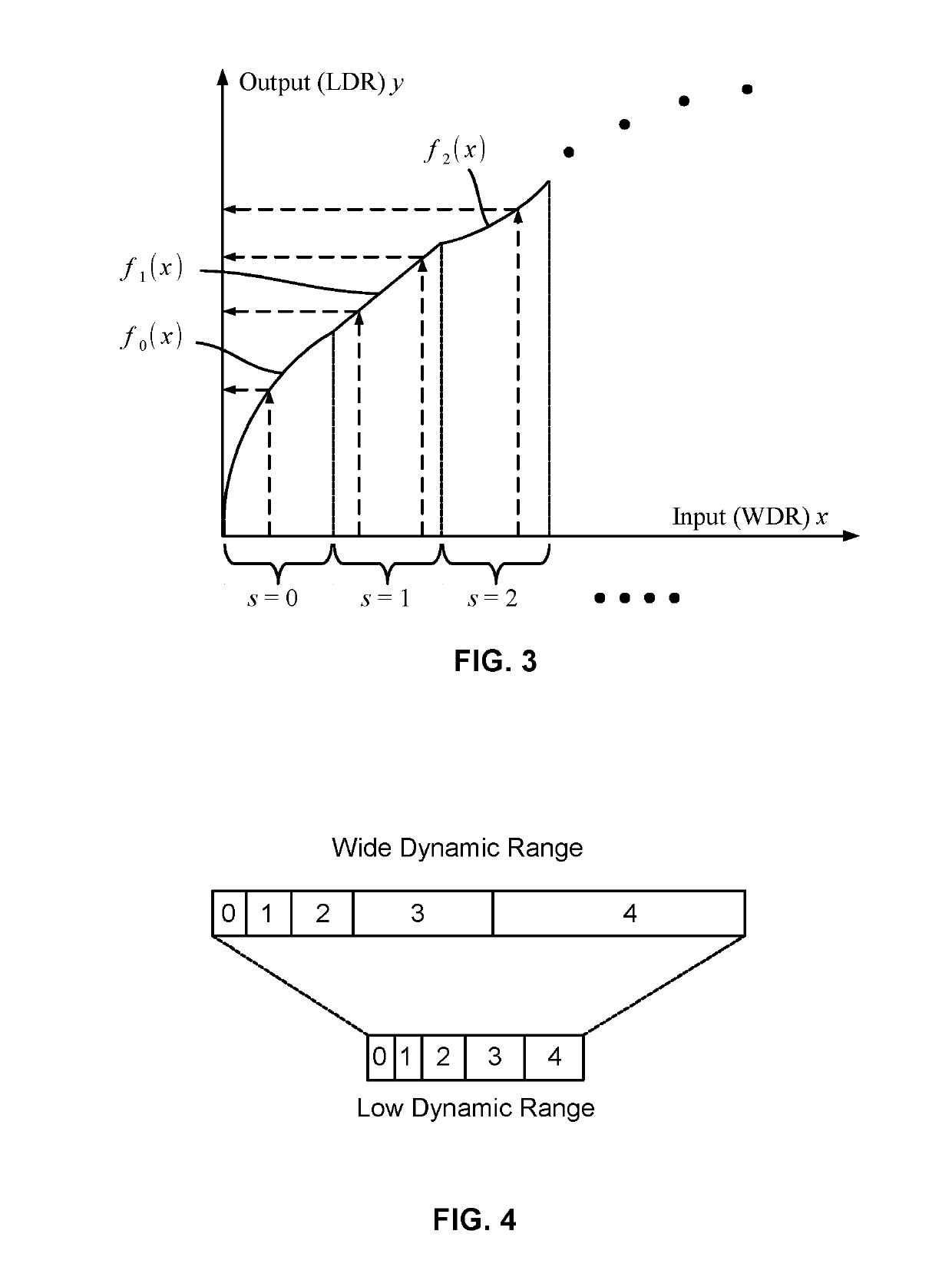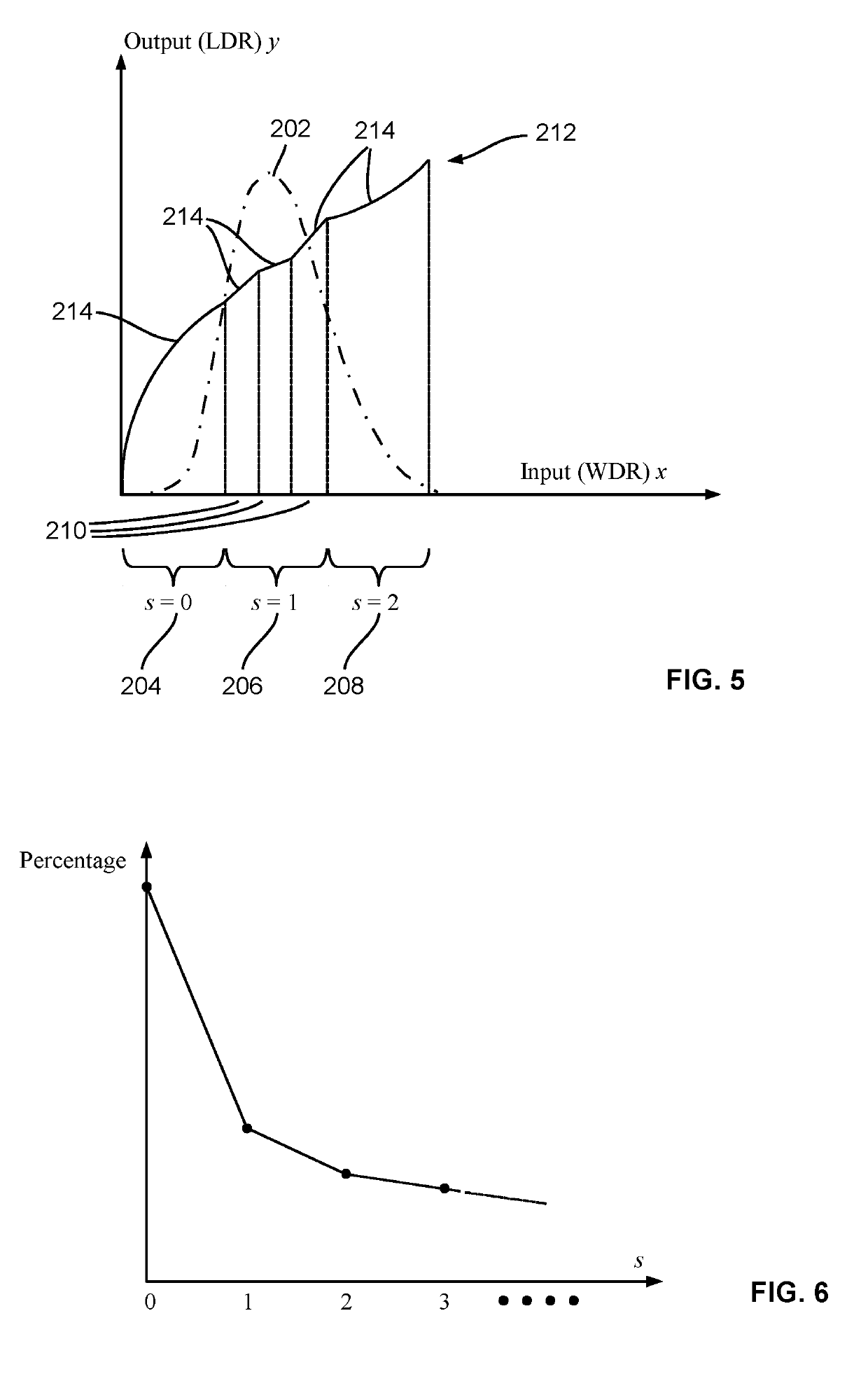Method of presenting wide dynamic range images and a system employing same
a wide dynamic range and image technology, applied in the field of image processing, can solve the problems of limited or low dynamic range of available presentation devices such as printers, monitors, projectors, etc., and achieve the effect of increasing the contrast of the finial output ldr imag
- Summary
- Abstract
- Description
- Claims
- Application Information
AI Technical Summary
Benefits of technology
Problems solved by technology
Method used
Image
Examples
Embodiment Construction
[0071]The embodiments of the present disclosure relate to image processing methods and systems for processing and converting wide dynamic range (WDR) images into low dynamic range (LDR) images suitable for presenting on presentation devices that do have sufficient dynamic range for properly displaying WDR images.
[0072]The methods and systems disclosed herein represent a WDR image in mantissa-exponent format and convert the mantissa-exponent-formatted WDR image to a LDR image for outputting. Herein, a WDR image is an image that exhibit a large dynamic range, and may be a still image, an image of a video stream, and / or the like. A WDR image may be in any suitable format such as RAW, Flexible Image Transport System (FITS), RGBE, Joint Photographic Experts Group (JPEG) such as JPEG-HDR, JPEG-XR and JPEG-XT, Tagged Image File Format (TIFF) such as Logluv TIFF, OpenEXR, and / or the like.
System Structure
[0073]Turning now the FIG. 1, an image processing system is shown and is generally ident...
PUM
 Login to View More
Login to View More Abstract
Description
Claims
Application Information
 Login to View More
Login to View More - R&D
- Intellectual Property
- Life Sciences
- Materials
- Tech Scout
- Unparalleled Data Quality
- Higher Quality Content
- 60% Fewer Hallucinations
Browse by: Latest US Patents, China's latest patents, Technical Efficacy Thesaurus, Application Domain, Technology Topic, Popular Technical Reports.
© 2025 PatSnap. All rights reserved.Legal|Privacy policy|Modern Slavery Act Transparency Statement|Sitemap|About US| Contact US: help@patsnap.com



